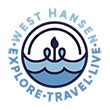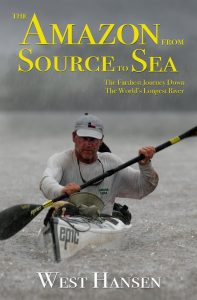Photo Credit: Wolfgang Eckert : Pixabay
Day 14…211.5 miles
After arriving to set up camp after 10:00 pm last night, the team stopped at a fresh water creek to resupply water. Well…what they “thought” was a creek. In the middle of the night, they realized the creek was actually an estuary—the tidal mouth of a large river, where the tide meets the stream. They discovered their boats were being sucked upriver into the high tide (not dangerously so) and so they were up at 3:00 am moving their boats to higher ground. While they were up, they decided to go ahead and move their tent, as well. Probably a good call.
When the team is paddling along, oftentimes, they pass cliffs for 10-15 miles at a time. It’s at that moment, they start scouting places to camp. If they see a spot, they have to determine if that’s the last camp spot they may see for another 10 miles. Once they stop, they set up their camp while still wearing their paddling gear. It’s usually pretty cold and they are wet so the shakes are prevalent. Once they get their camp set up, they change into warm, dry clothes and then get dinner ready and set up the inside of their tent. They are both having difficulty sleeping. Their hands are swollen after paddling all day and they both have cuts and scrapes. It makes it difficult to perform even the simplest of tasks. By morning, the swelling has gone down somewhat. Once paddling, the swelling is gone completely.
Both guys are feeling okay despite always being cold and wet. The wind changes constantly. The waves swell and die. The sun peeps out, then goes away. All of these are factors in how far or fast they paddle each day. Definitely there are challenges every single day. If it were easy, everyone would have already done it.
They are headed to Arctic Bay where they will resupply and charge their electronics. The goal is for them to be back on the water Friday morning.
–Barbara Edington





